The purple beauty bell pepper is a rarity in the garden. You almost never see them in grocery stores, with red, yellow, and green bell peppers being much more popular.
However, if you garden at home, you can add a gorgeous and unique color to your pepper patch: purple! The purple beauty pepper is an heirloom variety with deep violet coloring when unripe. Eventually, the fruits will turn red, but are more often harvested when purple.
So, in this article, I’ll share everything about purple beauty peppers. You’ll learn about the history of this beautiful, lavender sweet pepper, its flavor and uses in the kitchen, as well as how to grow it at home.
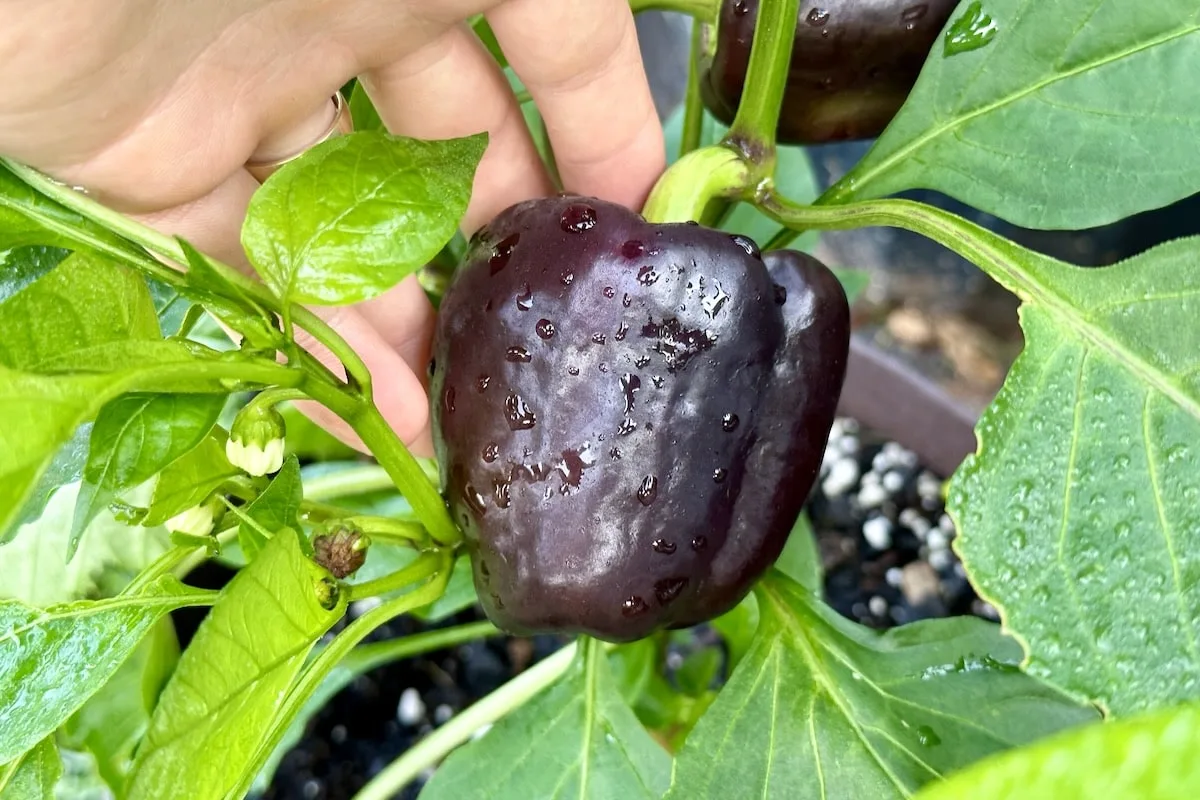
About Purple Beauty Peppers
It is unclear exactly where the purple beauty pepper originates. The Holland bell pepper (another purple bell pepper variety) was developed in holland in the early 1980s. It is possible that the purple beauty is simply a re-naming of the Holland bell pepper.
| Name | Purple beauty, purple bell pepper (heirloom) |
| Species | Capsicum annuum |
| Watering | Consistent moisture, good drainage |
| Lighting | Full sun |
| Soil | Well drained, pH 5.8-6.8 |
| Heat level (Scoville units) | 0 SHUs (sweet) |
| Flavors | Mildly sweet bell pepper, fresh, crunchy |
| Buy seeds | Amazon, Totally Tomatoes |
The purple beauty pepper is part of the Capsicum annuum species. This is the same group of peppers that includes bell, jalapeño, serrano, cayenne, fresno, and many other popular sweet and hot peppers.
The most notable characteristic of the purple beauty pepper is of course its purple color. However, purple peppers are not uncommon. There are hundreds of cultivars that have purple pigmentation, from superhots to other sweet peppers.
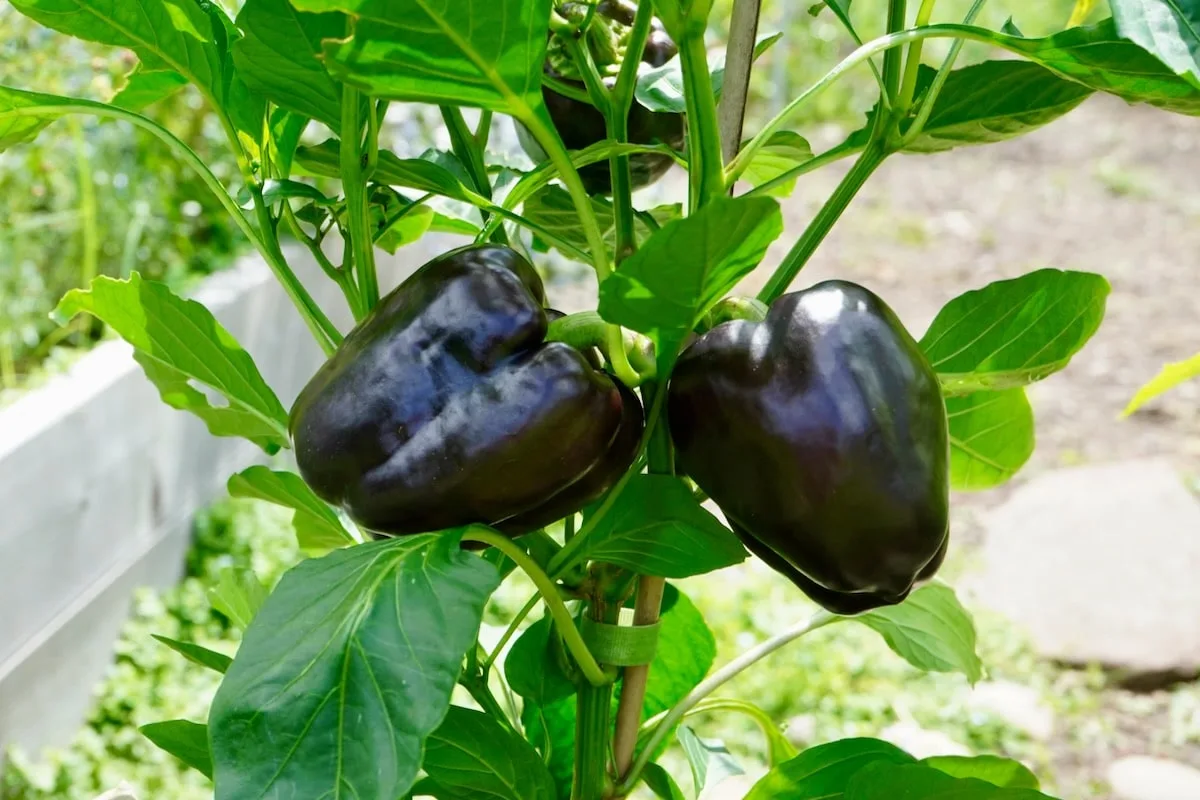
Purple bell peppers are completely sweet, meaning they do not have any spiciness. If you want to grow purple peppers with some kick, try the buena mulata (purple cayenne).
Growing Purple Beauty Peppers
If you want to get your hands on some purple bell peppers, you’ll likely have to grow your own. You might be lucky enough to find some at a local farmer’s market, but they are otherwise very rare.
Thankfully, growing purple beauty peppers is as easy as growing bell peppers from seed. We have even seen purple beauty plants at plant nurseries in the spring, meaning you may not have to start the plants from seed.
You can grow purple beauty peppers in containers (ideally 5+ gallons of space), in raised beds, or directly in the ground. The plants are smaller in size, typically around 18-24″ tall at maturity.
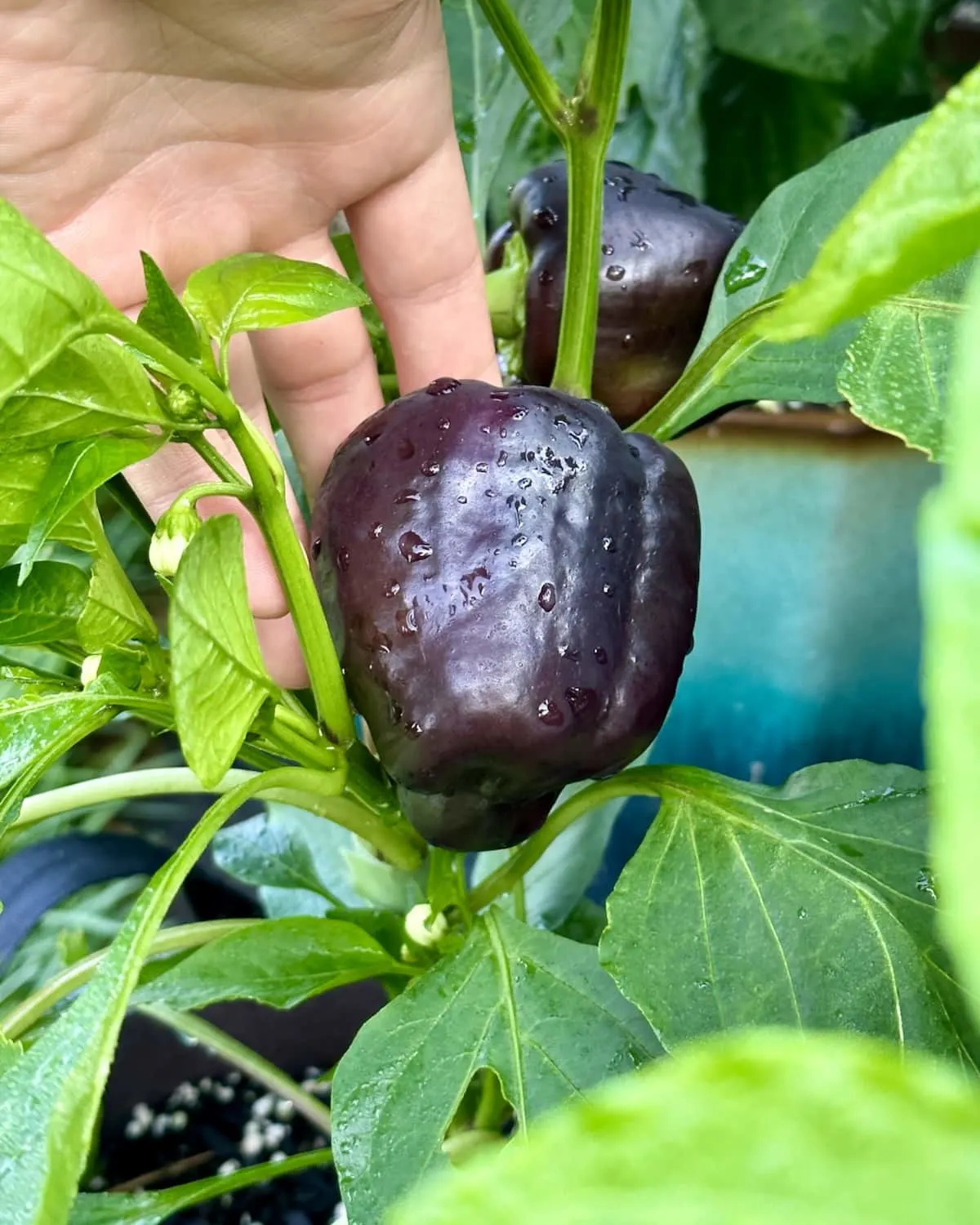
Choose a well-drained soil that has moderate soil fertility (don’t over-water or over-feed!). Keep the soil consistently moist throughout the growing season, but never allow it to become water-logged.
If you want the biggest peppers possible, limit your plant’s production to between 4-8 bell peppers at a time. Prune away any additional fruits that try to form to encourage larger fruit size. Otherwise, you can leave all the peppers to form (I like big bell peppers for stuffing).
When to pick purple bell peppers
One of the most confusing parts about growing purple beauty peppers is knowing when to harvest. Do you harvest when they’re purple, or wait for them to change color?
I recommend that you harvest purple bell peppers when they have reached a mature size. Leave the peppers on the plant for an additional 1-2 weeks after maturing in size before picking.
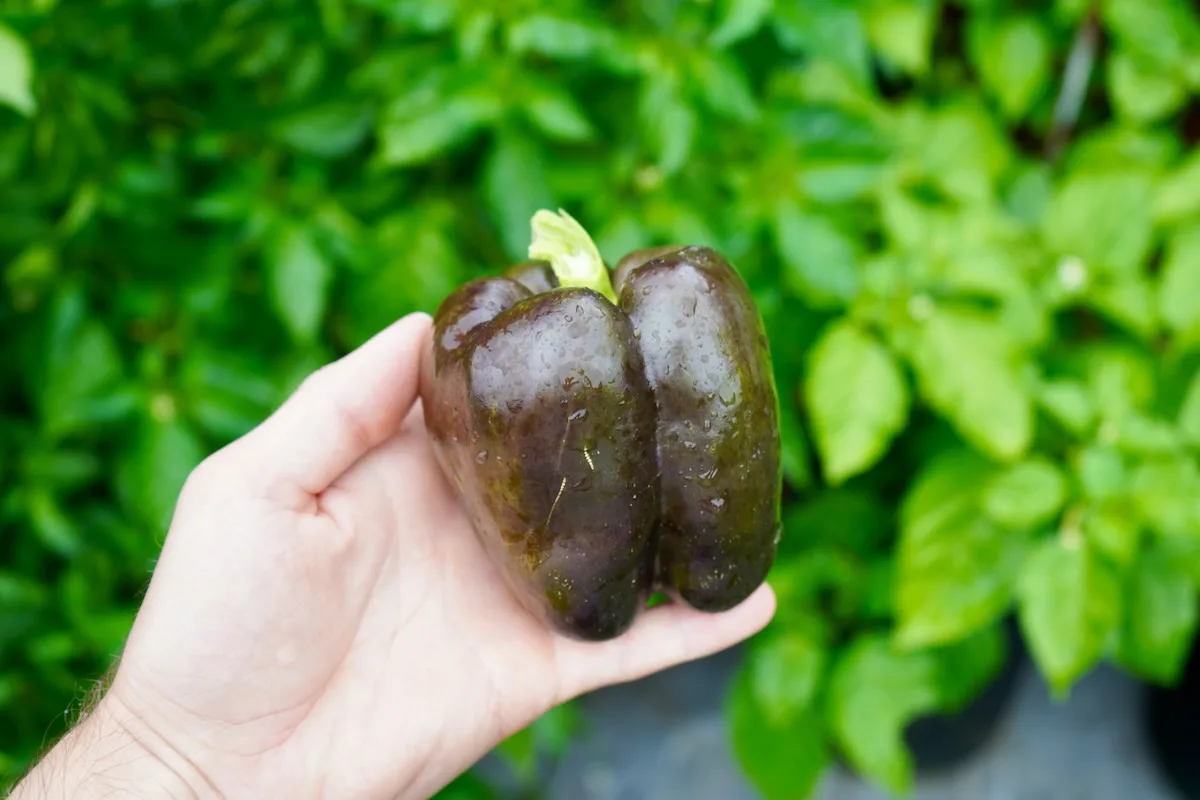
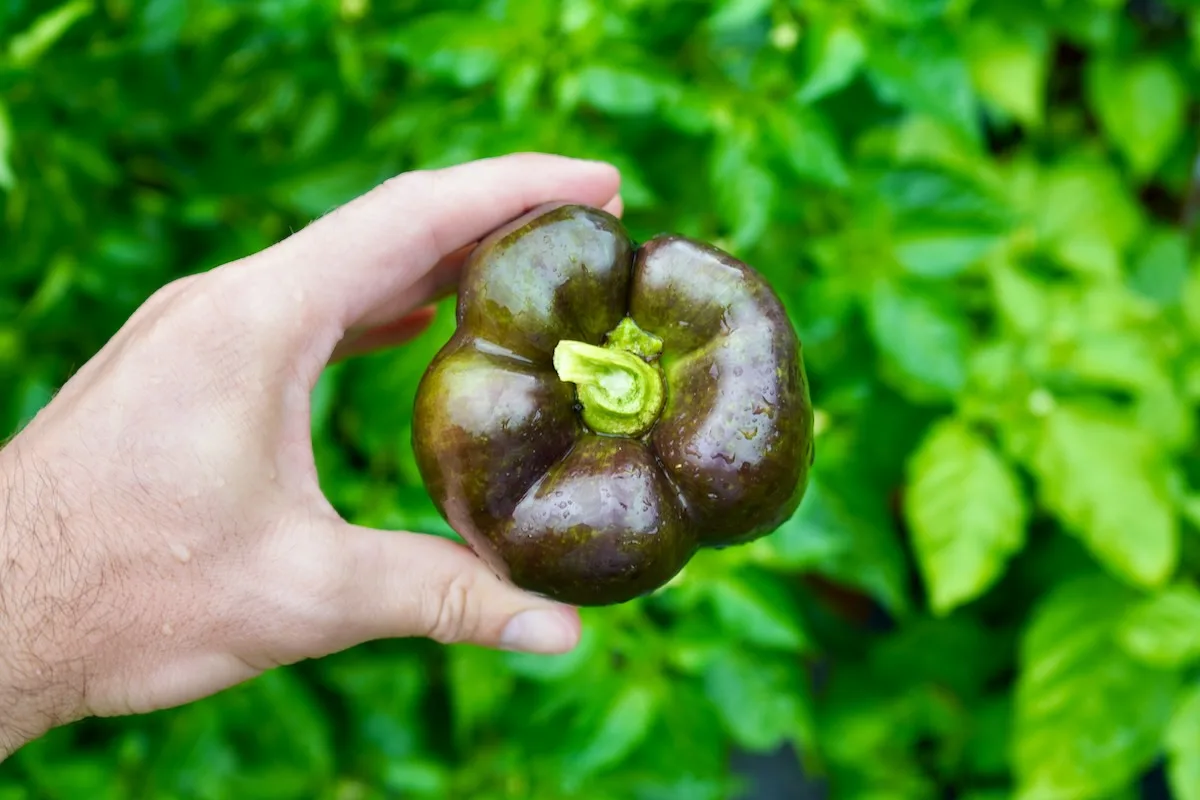
Alternatively, you can wait for the purple beauty peppers to fully ripen. Purple bells will eventually turn red when ripe. At this point, the peppers will have a softer texture and sweeter flavor.
Purple Bell Pepper Uses
As you may have guessed, purple bell peppers can be used just like any other bell pepper. Here are a few ideas on how to use them:
- Stuffed peppers. We loved stuffed bell peppers, in fact, it’s most likely why bell peppers are so popular to begin with. These peppers have thick, sturdy walls and a large inner space to fill with proteins, cheeses, other veggies, and spices. Find stuffed pepper recipes here.
- Cooked fresh. Stir fry, omelets, tomato sauces and more. Use your purple beauties for cooking straight out of the garden for great flavor and crunch.
- Roasted. If you love roasted peppers, try roasting your purple beauties. Coat them in a thin layer of oil and toss them in a hot oven or on the grill for about 10 minutes, flipping 1-2 times. You can then peel the blistered skins and refrigerate the roasted peppers for up to a week. Then, use them in our delicious roasted red pepper dip.
- Salads. If you want to add a unique color to your fresh salads, purple bell peppers are perfect. While I prefer the flavor of ripe red peppers, the purple color is what makes these so special.
- Frozen. Freezing peppers is a great way to preserve them for later use. If you have a bunch of purple beauties, slice them up and freeze them in freezer or vacuum sealed bags.
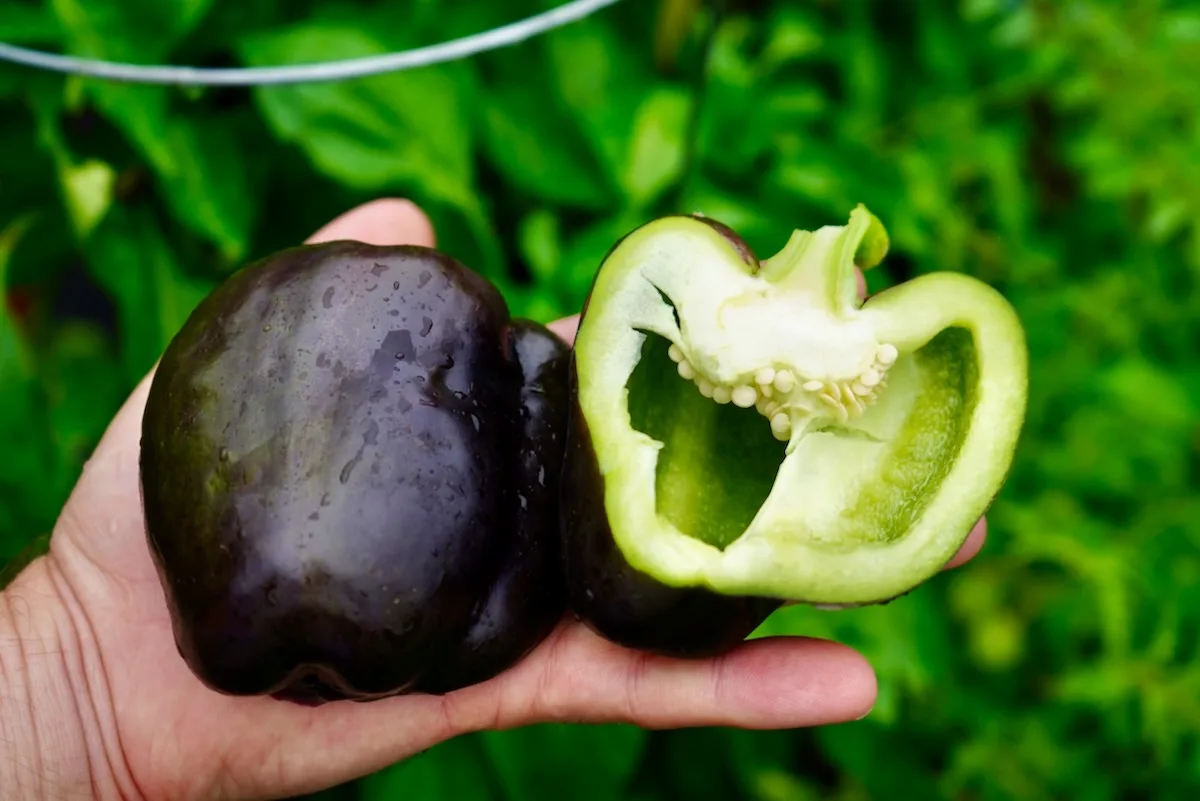
It’s no secret that we love growing a wide variety of peppers. If you prefer to stick to bell peppers, but want a bit of extra flair in the garden, I’d recommend trying the purple beauty bell pepper!


Kirsten Williams
Monday 15th of April 2024
I'm struggling with getting my seeds to grow. I've tested them the same as my other bell pepper seeds but they don't seem to grow. Any suggestions?
Kirsten Williams
Tuesday 23rd of April 2024
@peppergeek, I just got them this year so hopefully they are new. When you grew them were they slow to start?
peppergeek
Wednesday 17th of April 2024
Could they be older seeds that aren't viable? Not sure what to suggest other than standard germination techniques (warmth and moisture until they sprout).